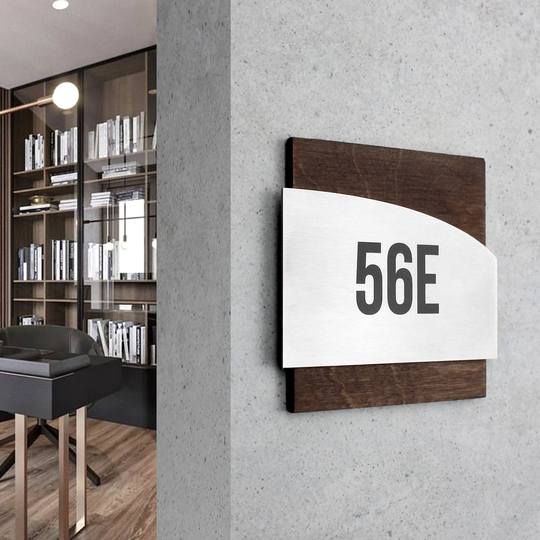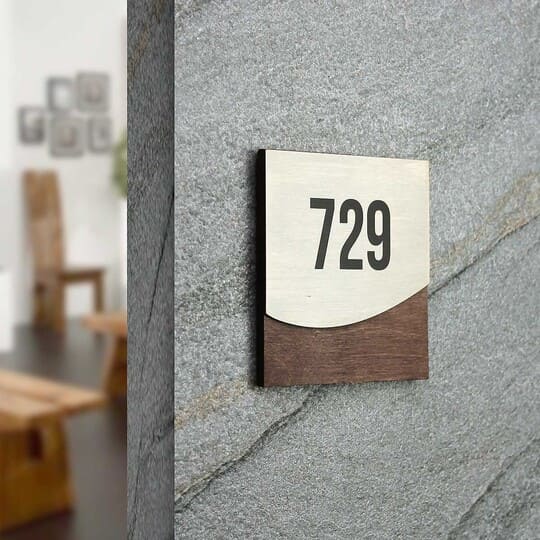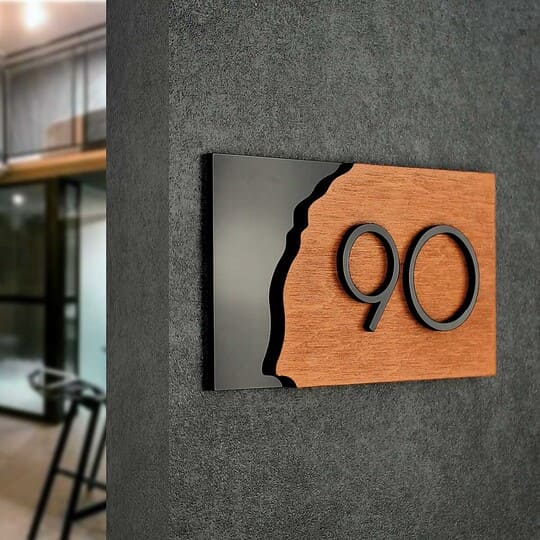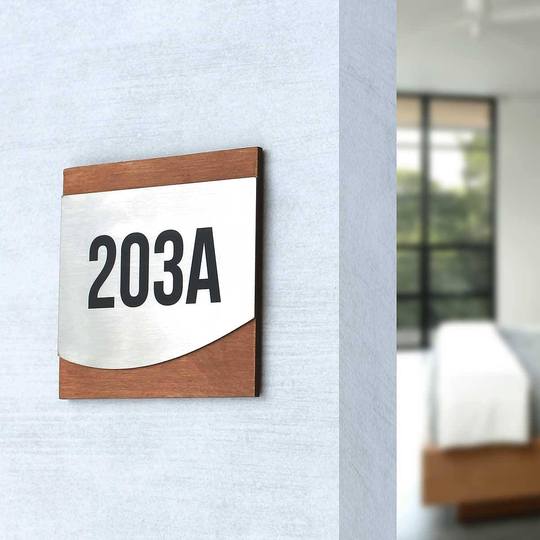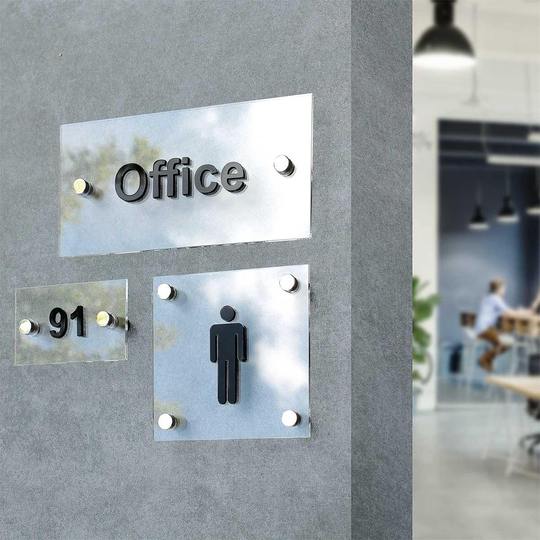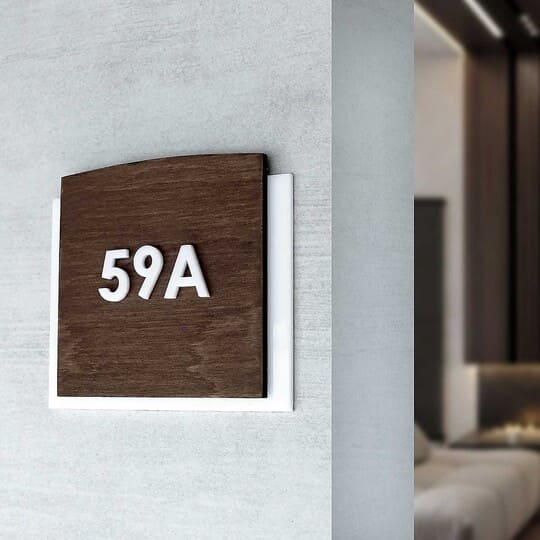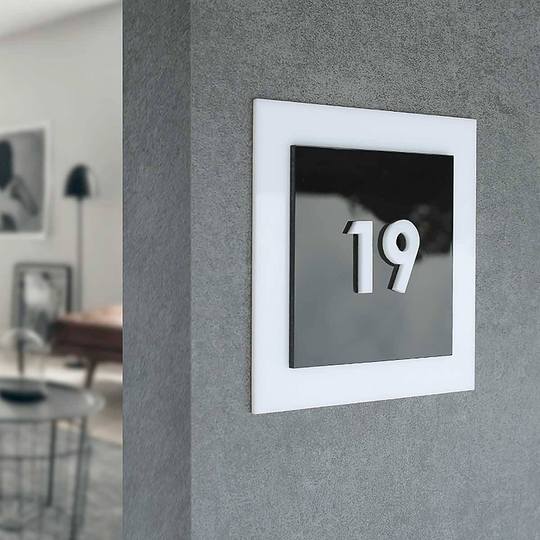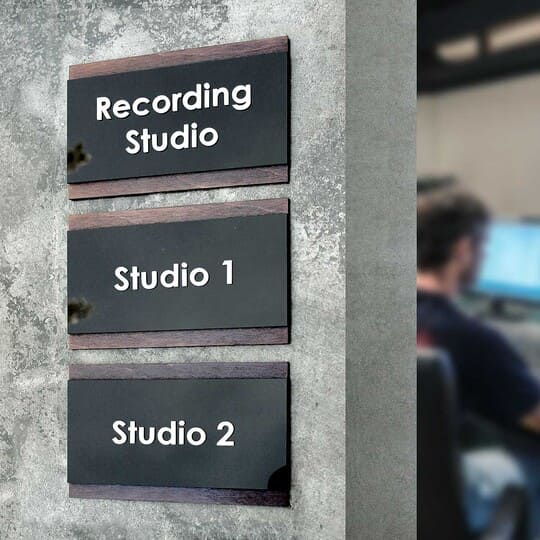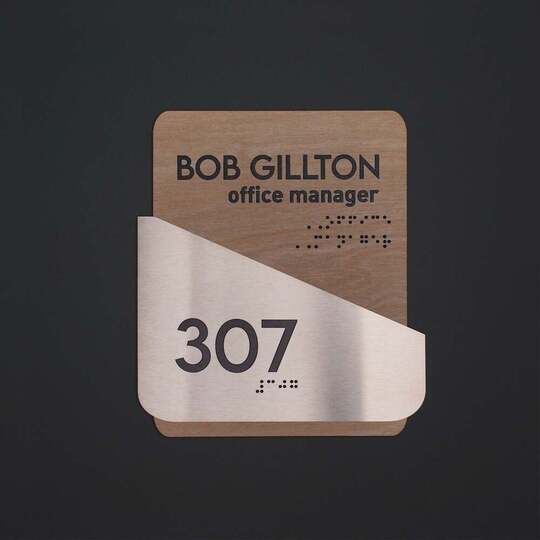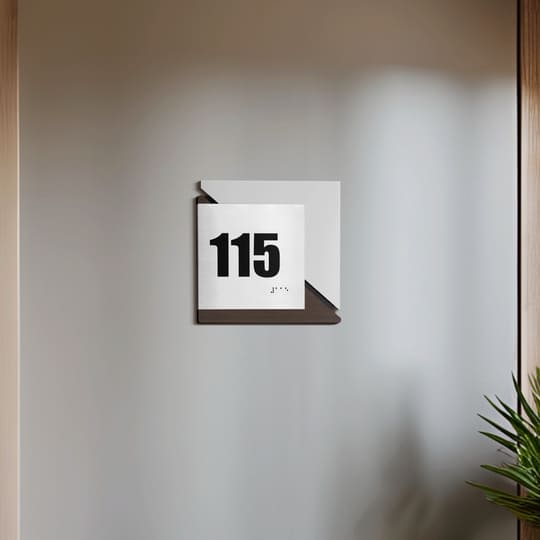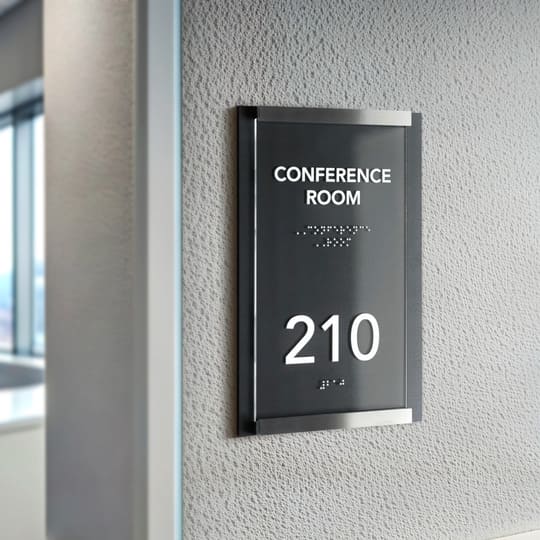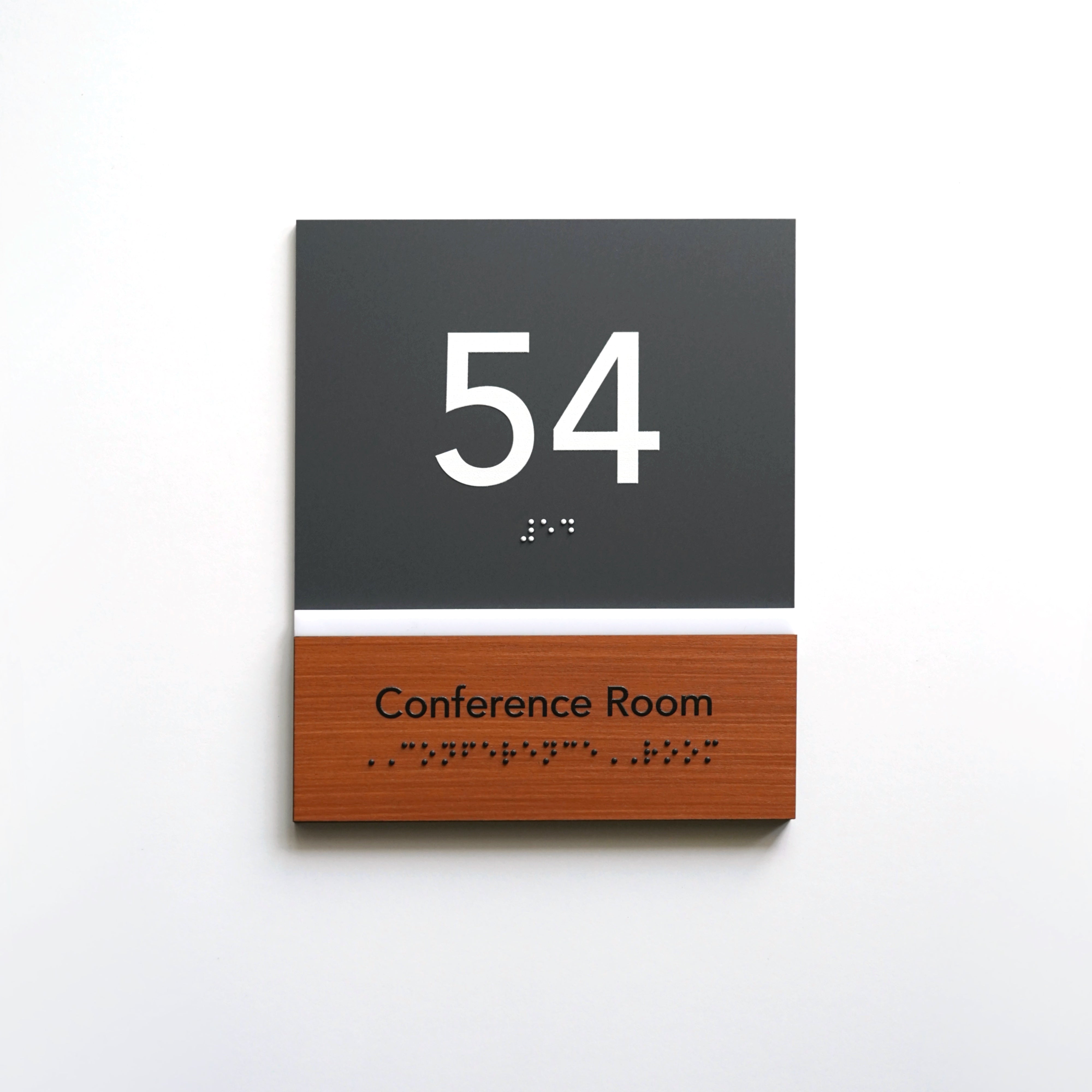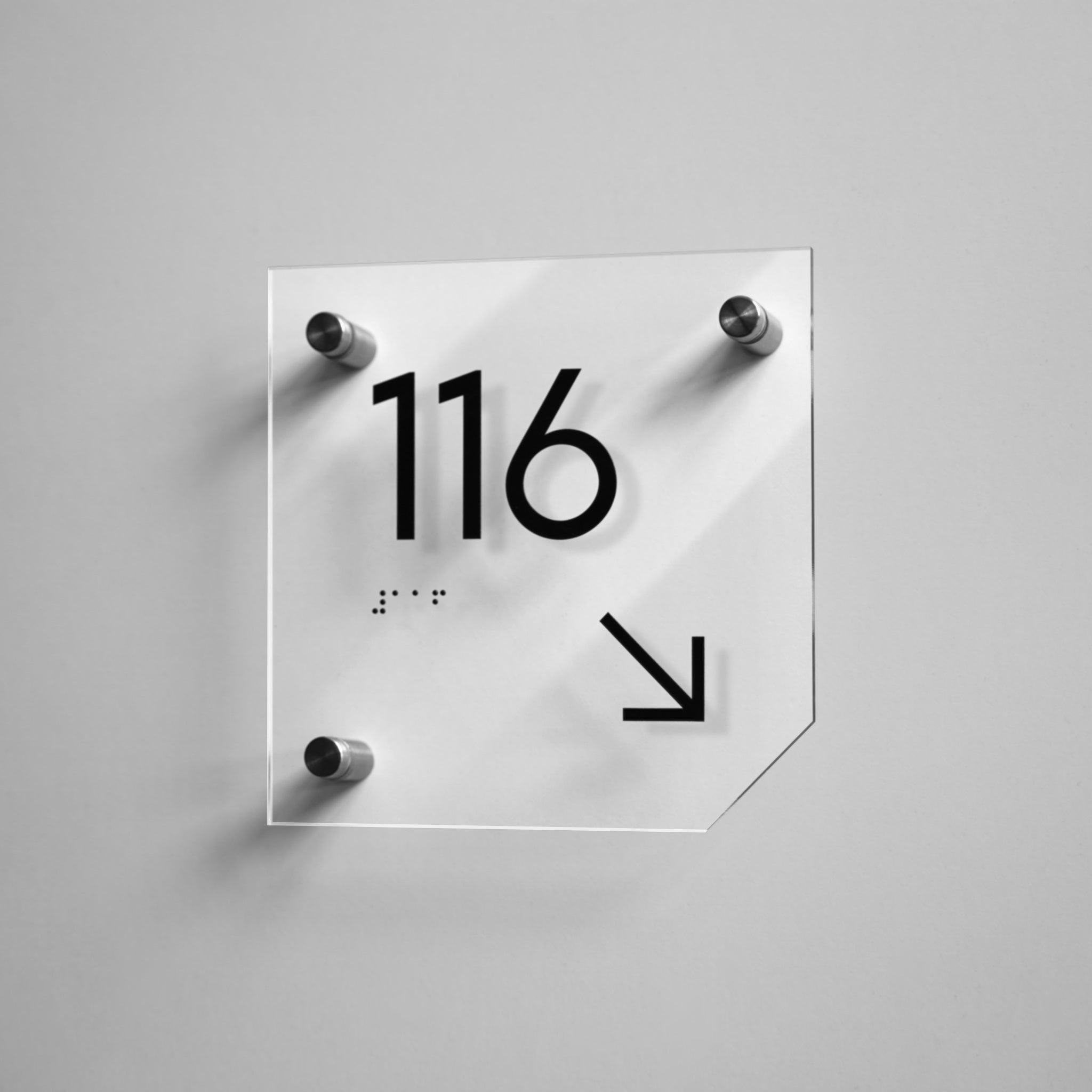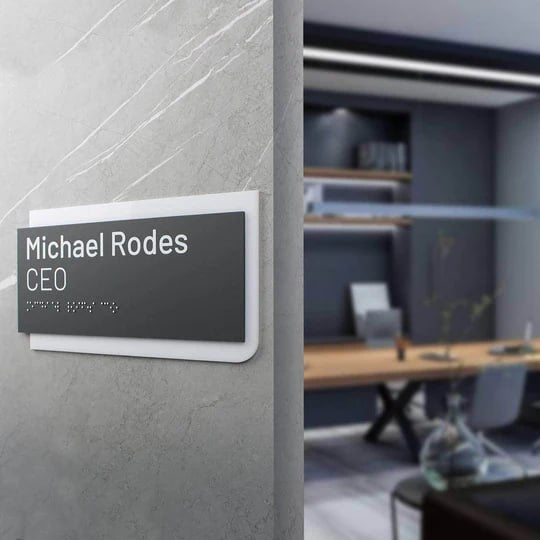
Top 5 places in hotels where information and navigation signs are required
To assess the success of hotels, there are objective digital indicators, such as real occupancy, income from the room, and others. Almost all of them depend on how much guests like the hotel, what reviews they leave and whether they are ready to recommend it. And here become extremely important such subjective factors such as atmosphere and feeling of comfort.
It is difficult to measure these things, they are individual and are formed under the influence of details. These details include navigation signs and numbers. They help you quickly navigate even in large hotel complexes with complex layouts. And these products emphasize the overall style of the interior.
BSIGN company has been manufacturing hotel signs and numbers for more than 10 years. Usually, people order a comprehensive service from us:
- consultation from BSIGN specialists, during which we discuss the features of the premise and choose the optimal product design;
- development of a navigation system, which will cover all the elements that guests need for orientation;
- customization, which will help to create unique hotel door signs, such as changing the color of the wood, size, fastening method, adding your logo, Braille, and so on.
It is important to know the key places in hotels where exactly the signs should be placed. They will help guests quickly understand the shortest route to the desired location on the territory. In addition, it will relieve the staff, who will have to answer fewer questions.

Hotel lobby, reception
According to the rules of hospitality, there should always be an administrator or other competent employee in this area who can give answers to guests' questions. But a detailed navigation sign for a hotel is also a mandatory element of a high-level establishment.
You should indicate on it the location of:
- a restaurant, bar, cafe;
- elevators;
- rooms on the floors;
- medical center;
- swimming pools, gyms, beauty salons;
- toilets;
- storage rooms.
Some guests simply take a picture of the main navigation sign of the hotel and then use it as a hint all the time they stay in the hotel.

Elevator area and its cabin
When a person is standing near an elevator or is already in it, they want to understand which floor to press to get to, for example, a restaurant.
It is also important for guests to quickly orientate which rooms are located on a particular floor. This is especially important when the hotel has a large number of rooms.
Stairwell
On the stairs there should also be information signs for hotels, which indicate the floor numbers. In addition, here is often indicated the direction where are located:
- elevator;
- fire extinguishers;
- latrines;
- smoking areas.
Corridors
You should place a floor plan and hotel directional signage here so that the person understands where they are and what is here. You can specify in which direction to move to certain rooms or stairs. This is especially important for premises with long corridors, multiple elevators, and stairwells.

Rooms
It is convenient for guests to have in front of their eyes information about which floors the premises they need are located on, for example, a conference room, a swimming pool or a laundry room.
You can also indicate the phone numbers of the reception and room service on the table signs for hotels.
If navigation and information signs for hotels are located in all "strategic" locations, guests will clearly understand what services you offer and where to get them. This will significantly increase their level of comfort, so your hotel will be remembered for a pleasant atmosphere that you want to return to.
Do you need separate information signs and plates or the complete navigation system? Call or leave your contacts in the form on the BSIGN website and we will contact you to schedule a consultation. There we'll discuss the style, materials and prices of the signs you need.

